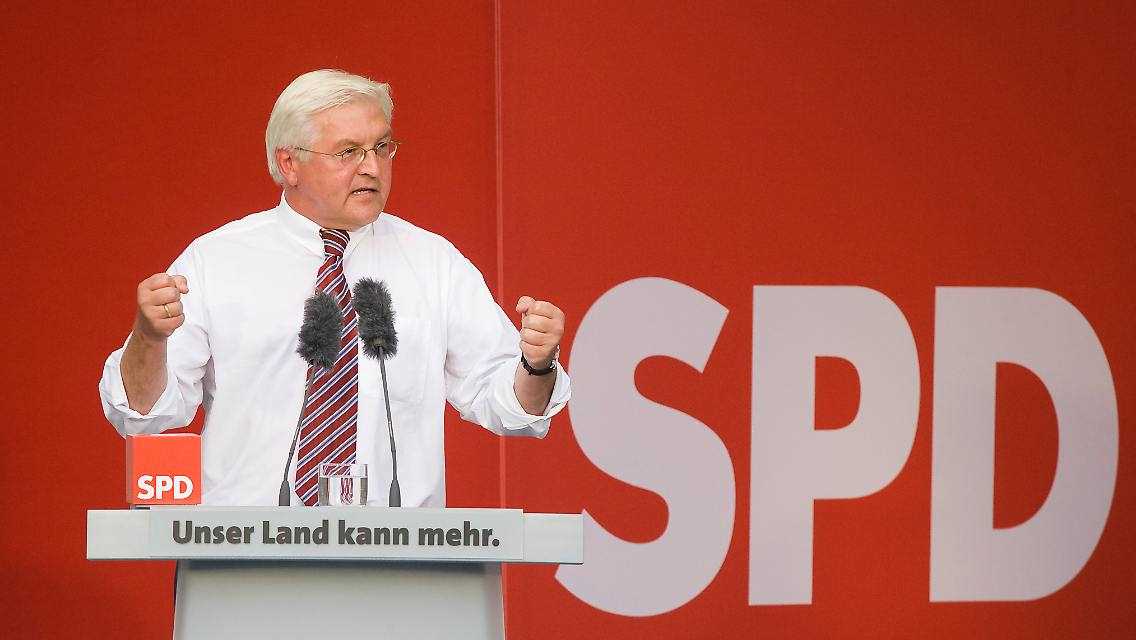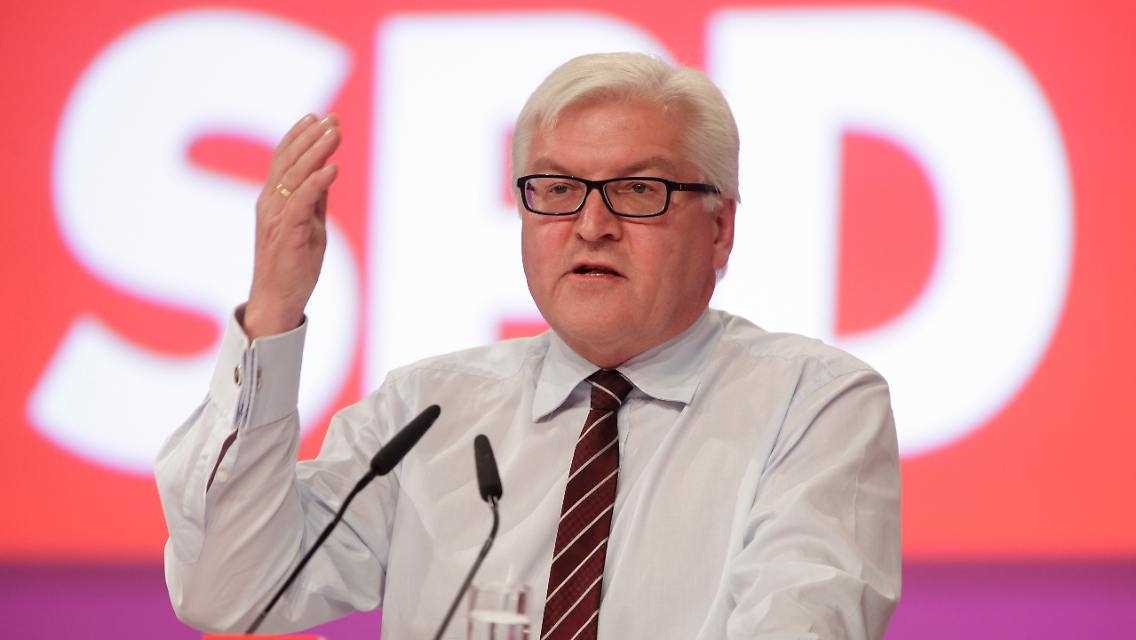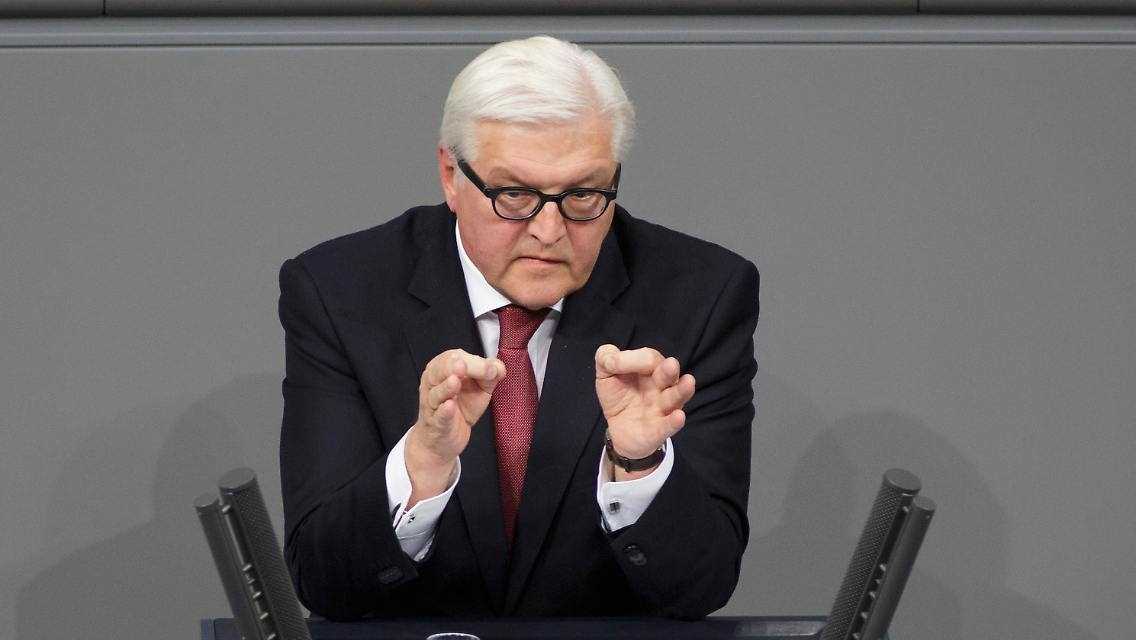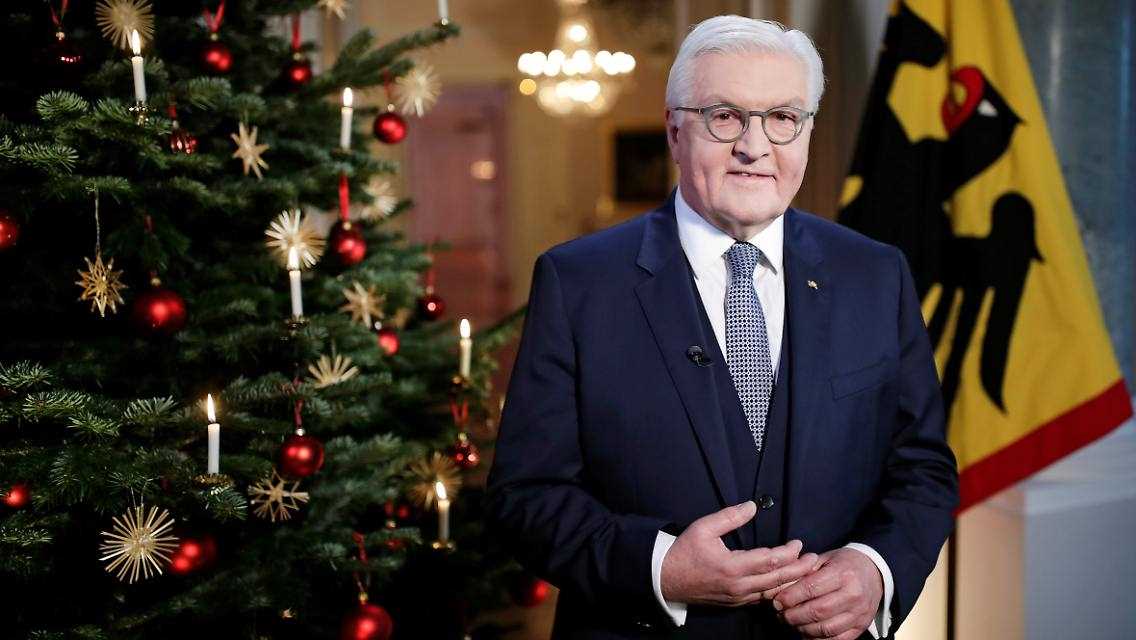Federal President Steinmeier will be re-elected this Sunday. The head of state has one mission above all: to talk! What is he doing with his hands? With the voice? What language does he use?
To avoid angry readers: This text is a performance analysis by Federal President Frank-Walter Steinmeier, not a political evaluation. Seen in this way, a speech about how he stubbed his little toe that morning could be “better” than one about war, a pandemic or an economic and social jolt. It is a judgment of “how”, not “what”.
Every speech lives on three dimensions. First, the text of the speech: How emotional, clear and graphic are the sentences chosen? Second, the body language: What is Steinmeier doing with his hands? Does he use the body? Third, the voice: How does Steinmeier sound? Does he vary the pitch of his voice, the speed of speaking?
Much of this depends on the context. Steinmeier was a roaring SPD election campaigner, mildly formulating foreign minister and as Federal President also a little soporific folk educator. He railed against the right, rode glaring attacks against the former Chancellor and admonished lateral thinkers.
Steinmeier’s grapefruit double fist
Steinmeier’s gestures are concise. He has a small arsenal of highly recognizable gestures. All speakers have their style – and sometimes all sorts of things can be read from hands and small movements.
There’s the expansive hug: arms spread wide, palms facing forward. Signal: “all of us”. At the same time, Steinmeier offers a target for attack. It shows: I’m here for you, I’m without cover. There is a kind of painful yet proud sincerity, as in Martin Luther’s “Here I stand and I cannot help it.” Broad gestures also testify to a sense of mission and missionjoy. You hardly ever see such gestures from Olaf Scholz, he doesn’t like the stage, his gestures are small and fluffy. Steinmeier is at home on the stage.
Steinmeier on January 26, 2017 in the Bundestag. This was his last speech as Minister in the Chamber.
(Photo: picture alliance / Kay Nietfeld/dpa)
Sometimes Steinmeier – regardless of his current office – pulls out the double fist: Whoever clenches his fist signals: This is what matters to me from the bottom of my heart! Steinmeier sometimes even clenches both hands in front of his navel, swings them towards the ground as if he were trying to hammer in an invisible peg. He uses it to conjure up, demand or praise cohesion. He did it in the Bundestag, during the election campaign, even briefly in his Christmas speech. Sometimes he leaves his hands slightly open, as if cradling grapefruit – a more delicate variation of the double fist.

Steinmeier as Chancellor candidate, in September 2009 in Bochum.
(Photo: picture alliance / photothek)
The “Italian edge of the hand”
The right-handed person usually gestures with their right hand. Sometimes he even has the left one in his pocket, casually, especially as an opposition politician, sometimes the left one just hangs on his body. That shows: I can’t do any more than criticize! I’m not at the helm but would know the course. Steinmeier’s left arm, on the other hand, is usually only used in synchronous movements.
Whenever he wants to make a special point, Steinmeier makes the “shake of the hand” customary for politicians and decision-makers: It’s a decisive gesture, but not yet aggressive. That would be it if the palm is turned down or the index finger is folded out – looking at you, Armin Laschet.

In December 2011 at the SPD party conference in Berlin. Steinmeier was then SPD parliamentary group leader.
(Photo: picture alliance / photothek)
Steinmeier’s repertoire of gestures also includes a special, individual variation of the edge of the hand. It is a mixture of the “precision gesture” on the one hand: If you want to make a particularly difficult point, you like to press your thumb and forefinger together and leave the other fingers relaxed. Palm to the sky, it’s the cliché of the dedicated Italian. If the palm of the hand is pointing inwards or downwards, the speaker signals: “Here, this one point is important to me!”
But Steinmeier combines the edge of the hand and the precision gesture: He presses his fingers and thumb together and at the same time tightens the other three fingers to the edge of the hand. It’s a combination of explaining and leadership.

Federal Foreign Minister Steinmeier makes a point in the Bundestag in January 2014.
(Photo: picture alliance / photothek)
The wedding ring as an anchor
Since taking office as Federal President, Steinmeier has undergone a certain amount of training. During his Christmas speeches, his hands seek light contact in front of his stomach. You could call it “playing with the peanut”: The hands are not folded (that looks stressed, like with Scholz’ spokesman Steffen Hebestreit seen recently), but touch each other lightly. You know that from some portraits of the Tagesschau announcers.
Steinmeier sometimes plays with his wedding ring when making contact. That should have a calming effect, even if some couples may snort mockingly here. Steinmeier has been married to his wife, Elke Büdenbender, since 1995. Since he temporarily gave up his job for her and donated her a kidney, one can assume that this couple gives each other support. Body language is sometimes a mirror of one’s own biography.
Steinmeier’s language images
Steinmeier’s language depends on his office: as a member of parliament and foreign minister, he served up the usual political mash of worn-out formulations and the same topoi. In a general debate in 2013 he spoke of the “sick man of Europe” (not his metaphor) and that the black and yellow government “reaped a lot”, “but sowed nothing”, “foreign feathers”, “made a nest”, “didn’t tackle it”, and so on – well.
For him, the fact that the SPD government had attested unreliability on European policy was “a mess to us.” At least that’s plain text! And instead of being grateful, the coalition “threw dirt at people” “who stood by Europe when your people had already left the square”. He even accused the government of “lying” – breaking a taboo in the House. Close combat, Steinmeier can do that.
He then caught up a lot as Federal President: in his inaugural speech in the European Parliament, he warned his compatriots against to hide behind “slug washers”. – not everyone understands the picture, but it is creative. Many citizens remember how he positioned himself against the Corona protests. “The walk has lost its innocence” is a phrase for headlines and the history books. He embodies vividly and directly the feeling that creeps up on the silent majority in Germany. Here, finally, protesters act like Till Eulenspiegel: as if a coordinated walk were something other than a meeting and the law was as dumb as a ticket machine.
The way Steinmeier’s speechwriters have a keen sense of metaphor can be seen in the way they deal with worn-out phrases. “Like under a magnifying glass, that old metaphor”, Steinmeier distanced himself verbally, for example when arguing about Germany’s modernization deficit. It’s nice when someone makes an effort. Steinmeier qualified for the history books with a sentence that is somewhat reminiscent of the band Rammstein and the song “Deutschland”: “You can only love this country with a broken heart.” In the words of Till Lindemann: “Germany! / My love / I can’t give it to you”.
Steinmeier, melee tube and tuning rasp
Speaking of Rammstein: the former Steinmeier actually sounded a bit like Gerhard Schroeder, whose chancellery chief he was for a long time. With a sonorous vocal rasp he roared at the opponent, such as the conflict with Ukraine in 2014 or at the 2009 party conference or 2008 when he reminded the Social Democrats that they were not an old piece of furniture. His tonality was encouraging, inciting, combative.
As foreign minister, he was polite and diplomatic. He still scored points, so he lowered his voice at the end of the sentence – Armin Laschet, for example, failed at that. But the “tube”, the rasping sound, had dried up.
Today you can see the Federal President mainly during his Christmas speeches. Here he cultivates a slightly admonishing conversational tone. The voice varies in pitch and tempo, but of course Steinmeier no longer gets loud. The Federal President sounds a bit like a doctor who tells his long-term patient that a body mass index of 30 is not a disaster, but shouldn’t you exercise at least once a week?
What is missing?
Steinmeier does not have the solemn vocal charisma of Johannes Rau, Joachim Gauck or Roman Herzog – not yet. The texture of his voice varies significantly less than with the three, his pauses don’t develop the dramatic effect, the last bit of liveliness is missing, you don’t feel the virtual dialogue with your audience. He still speaks very written, there are no anaphora, cinematic images like her Joe Biden used.
This is one of the reasons why Steinmeier has not succeeded in making historical speeches like Roman Herzog’s “Ruck-Speech” – not yet. But in the face of a pandemic, the threat of war and inflation, history will provide him with plenty of opportunity.

